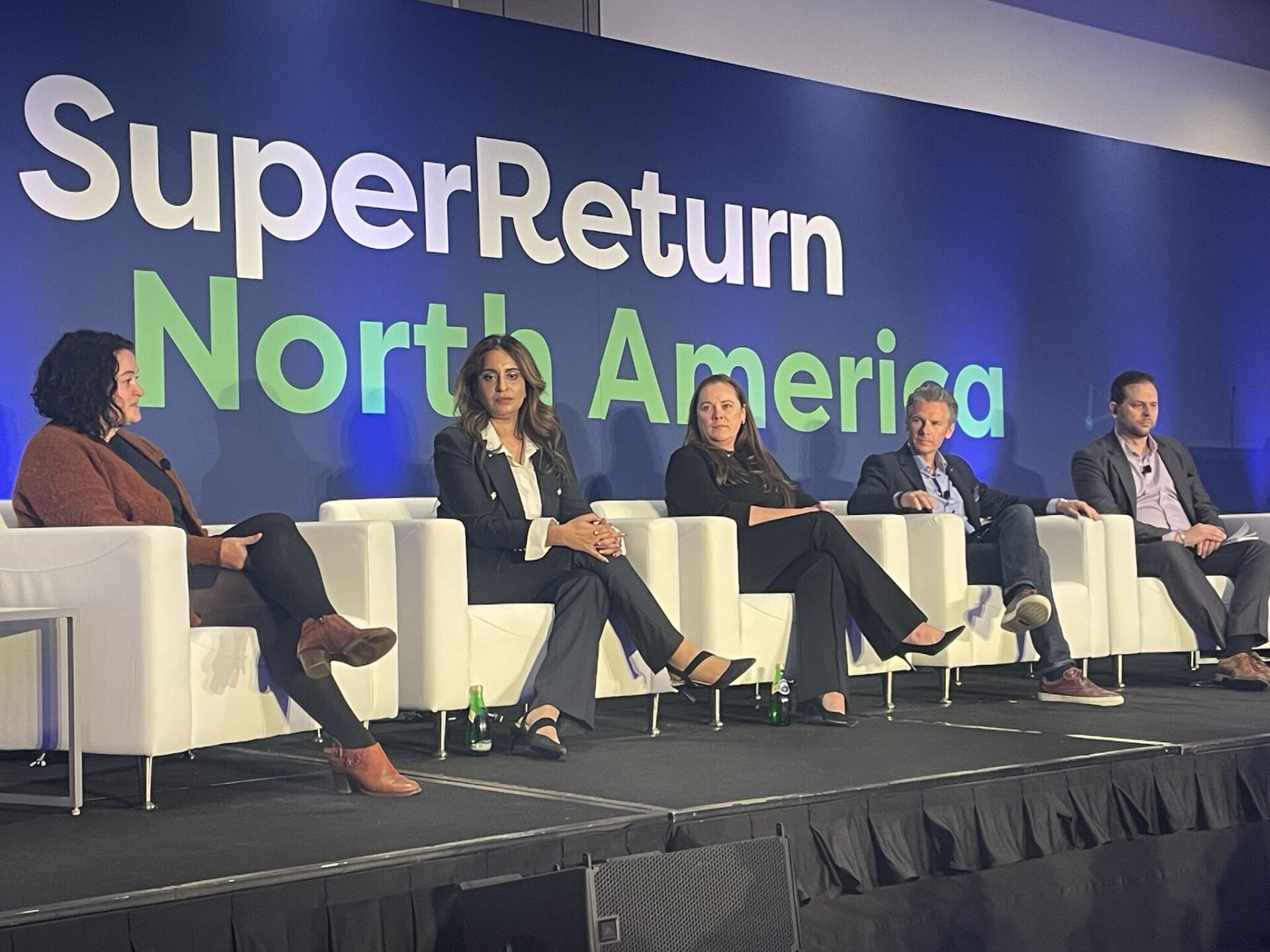During SuperReturn North America 2023, our CEO Tim Andrews participated in a panel discussion on the opportunities and challenges related to attracting retail and HNW investors to private equity.
Moderated by Jessica Nicosia SVP at Wilshire, the panel also included Aditi Javeri Gokhale, Chief Strategy Officer, President of Retail Investments and Head of Institutional Investments at Northwestern Mutual, Nicole Runyan Partner at Kirkland & Ellis and Cyril Schopfer, Managing Director & Head of US at CACEIS.

This is going to be one of the biggest reallocations of finance
Traditional pools of funding are largely fully committed – “they’re not going to make any more pensions”, so the industry needs figure out where the next wave of investors and clients may be coming from. Unlocking retail capital presents a c$10tr opportunity because “there’s a lot of private wealth in the country and a lot of this is not invested into alternatives but is interested in doing so”.
Unlocking retail capital presents a c$10tr opportunity.
How has this segment of the investor landscape evolved over the past couple of decades?
Sources of funding have evolved, however the method by which investors are brought into funds is still “very recognisable” from the days of the Barbarians at the Gate. As the next wave of private wealth comes through, this will drive material change in the way the private markets operate.
There’s “a ton more demand in the market” and this demand is “more sophisticated and centralised”, with single and multi-family offices and RIAs looking to get individual investors into the private markets. GPs are now focusing on this space as a growth area, so there’s a push to build “the plumbing” that’s needed to “marry supply and demand”.
What retail means really does matter.
What does retail mean and why does it matter?
When looking at the retail opportunity, it’s “important to understand who retail investors are…. they’re very sophisticated”. The question for GPs is around suitability and opening the doors to the “right retail investor”.
In terms of how this relates to capital raising “What retail means really does matter”. For some managers it might be a case of establishing a HNW feeder (fund) which is “fundamentally different” from going out directly to RIAs, Family Offices and wirehouses.
Structuring and distribution for retail
For fund managers, there’s a lot of time and cost associated with building distribution if they want their retail product to be successful, for instance partnering or establishing a JV with other organisations or building an internal broker dealer. Ultimately “retail is sold not bought”.
Retail is sold not bought.
The distribution networks needed to reach retail investors “are huge and varied”. There’s a lot of complexity associated with distributing funds outside the US across Asia, South America and Europe. This necessitates the skills to support retail products including both expertise in transfer agency platforms and the administration of private asset classes, so working with partners is critical.
Dealing with multiple jurisdictions with different standards and regulatory environments is a challenge for managers in the retail space as much as the institutional space so this “gives a real impetus to the professionalisation of private markets …into something that will become increasingly more akin to the public markets”.
Structuring is also a consideration. With many structures to choose from, when it comes to accessing the retail market, GPs need to ask themselves “what’s your strategy, who do you want to sell it to, how are you going to sell it?”
It’s not a gold rush…. there are challenges
GPs looking to the retail opportunity must understand, “this is not a gold rush, there are challenges that come with this”. These include:
- The products themselves, due to liquidity risk, higher minimums and higher fees “they’re not a mass play”;
- Reporting, (specifically setting up the structure to go from 100 investors to potentially 10,000); and
- Meeting investors’ expectations of a “seamless experience” from a technology perspective.
“Expect it to be a loss leader initially”: getting scale and efficiencies at play will be critical to making it work.
The lure of private capital will drive solutions
Technology will be key for allocation where managers go directly to investors however solutions will be found given the opportunity: “some GPs believe that they will raise 50% of their capital from retail investors” in 5 years.
There’s a huge focus from managers for a completely seamless end-to-end process to enable democratisation of the asset class.
Ultimately, “the lure of private capital will drive solutions but it will take a few years”.


